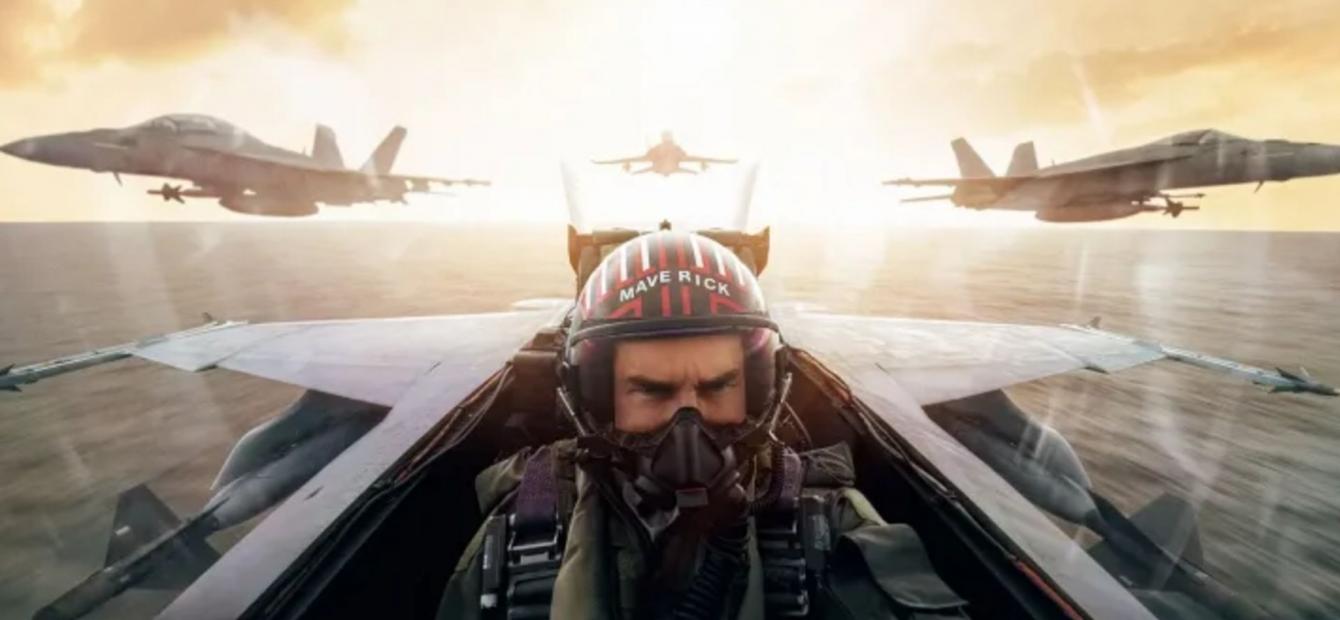
Top Gun: When the Pentagon loves Hollywood
After the release of the blockbuster Top Gun in 1986, the numbers of young Americans who wanted to fly for the US navy increased with 500 per cent. The release of Top Gun: Maverick in 2022 shows that the idea of using films to promote recruitment for the US Department of Defense is still very much alive.
As I entered the IMAX cinema, I noticed something odd with the audience. Usually, in this cinema in Rotterdam, you would find young people watching the latest blockbusters. They normally rush in, carrying a huge bucket of popcorn in one hand while holding a phone with the other, scrolling through Instagram to check the latest updates before facing the excruciating hours that a non-TikTok film can last.
However, when I went to see the latest Top Gun film, pretty much everyone looked like me: middle-aged, white men who probably enjoyed the original 36 years ago, and dreamt of being a high-speed pilot with impeccable teeth.
Top Gun (1986) was one of my favourite films growing up. I even learned to fly a plane with the hope of one day becoming like the stars from the US Navy Fighter Weapons School of San Diego. Life (and wisdom) decided otherwise; instead I became a scholar specialised in, among other areas, the relationship between cinema and propaganda. As such, the Top Gun films are a goldmine.
The 1986 film about Maverick – a hotheaded pilot from the US Navy sent to its elite school – was a fruitful collaboration between the United States Department of Defense (DoD) and Paramount Pictures. The film contributed to a massive rise of applications to the American Navy. In 1986, Lieutenant Commander Laura Marlow, who was in charge of recruiting for the naval officer programme in various counties, said her recruiters had received twice as many calls as usual about the aviation programme. About 90 per cent of those callers had seen the film.1
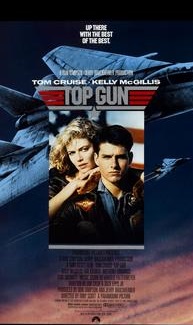 According to David L. Robb in his book Operation Hollywood: How the Pentagon Shapes and Censors the Movies (2004), the numbers of young men who wanted to fly for the US Navy increased with 500 per cent after the release of Top Gun. Application booths were installed near cinemas showing the blockbuster.
According to David L. Robb in his book Operation Hollywood: How the Pentagon Shapes and Censors the Movies (2004), the numbers of young men who wanted to fly for the US Navy increased with 500 per cent after the release of Top Gun. Application booths were installed near cinemas showing the blockbuster.
Using films to promote the American military has a long history
The DoD made sure Top Gun would be a public relations tool by carefully checking the script before approving it and contributing to the film by lending men and planes necessary for the action-packed scenes. In this regard, the film was a success: the public image of the army improved and joining it seemed to be a heroic fantasy. The film thus positively contributed to the rehabilitation of the military’s image, which had been savaged by the Vietnam War according to the DoD’s Hollywood Database.2
Regardless, the so-called ‘Top Gun effect’ might also be another Hollywood legend. In the late 1970s, the US Navy namely quit funding national recruitment. However, in the 1980s, the Navy began advertising again, putting as much as 31 million dollars to funding for recruiting in 1986 when Top Gun hit the cinemas.3
Nevertheless, using films to promote the American military has a long history. The DoD has been collaborating with Hollywood since the film Wings (1927)4 , the first film to ever receive an Academy Award for Best Picture in 1929. Now, decades later, the idea of using films to promote recruitment for the different corps of the DoD is still very much alive.
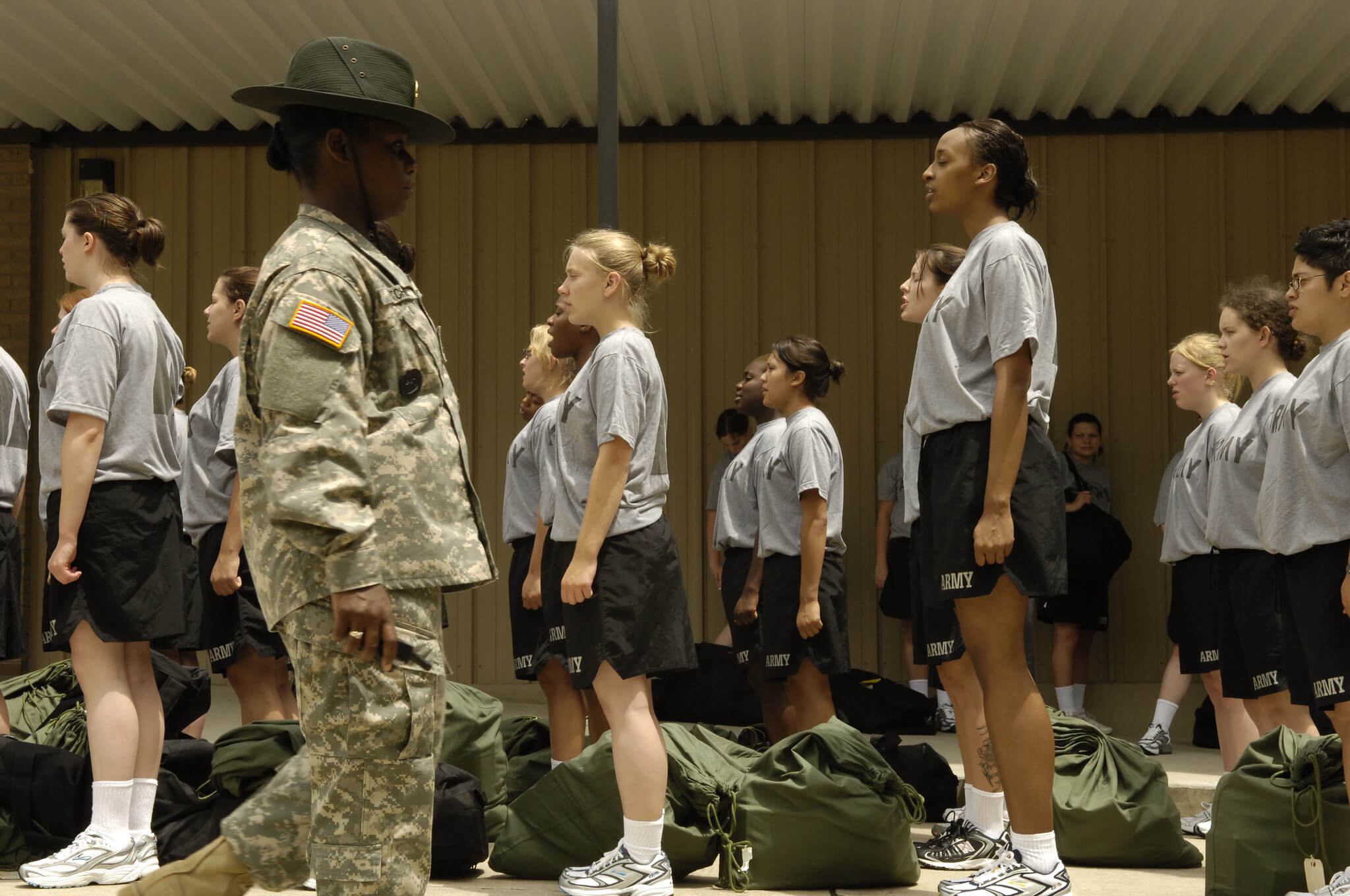
A recent example is Captain Marvel (2019), which also had a tremendous effect on recruitment after careful preparation. The US Air Force showed advertisements in the cinema before the start of the film, hosted press events with Eric Larsen (the comic book artist behind Captain Marvel) and organised a red-carpet screening in Washington DC. It has been suggested that the ‘Captain Marvel effect’ has led to an increase in female applicants to the Air Force Academy. The class of 2023 consists for 31.2 per cent of women, the highest number in the last five years.5
So, working with Hollywood can be very effective product placement for the DoD, though it cannot completely control the effects of such tie-ins. After the success of Top Gun in 1986, its producer, Jerry Bruckheimer, tried to provide a sequel to the adventures of Maverick as early as 2012, which clearly did not happen for ten years.
Receiving the help of the DoD means not having to spend millions on planes, tanks or warships
Hollywood is an entertainment industry and, as such, is always trying to find financing for its films or TV series. Receiving the help of the DoD means not having to spend millions on planes, tanks or warships. In exchange, the DoD will ask to check the script to maximise accuracy through liaison offices. The collaboration is no secret; the DoD itself states that it collaborates with the entertainment industries to “tell the military story right”6 and has been working closely with the production of the new film for years.
The question is whether Top Gun: Maverick tells the story right. This seems not to be the case entirely, as many mistakes have been spotted – from inconsistencies in the script to using the wrong uniforms.7 However, accuracy does not matter that much when it comes to inspiring stories. As told in The Man who shot Liberty Valance (1962): “When the legend becomes fact, print the legend”. Maverick was already legend in 1986, yet he comes back stronger than ever aged 59 – and with him, the myth of a glamorous and invincible US army is returning.
It is troubling that the same propaganda that worked so well in 1986, is still powerful in 2022 as the world does not seem to have changed much after the so-called end of the Cold War. In a way, Tom Cruise, one of the producers and actors, got lucky with the timing; with the Russian aggression against Ukraine, the world seems ready to launch another Cold War. The film could not have arrived at a better time, since China and Russia are increasingly challenging the West, especially the United States, in a highly aggressive manner.
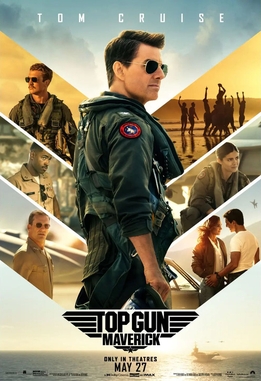 The plot of the film shows Pete Mitchell (Tom Cruise), better known by his call sign ‘Maverick’, returning to the US Navy Fighter Weapons School: Top Gun. Though approaching sixty, ‘Mav’ is still the best navy pilot on duty, capable of testing jet prototypes up to incredible speed (Mach 10.2). Maverick is asked by his old friend Admiral Tom Kazansky, also known as ‘Iceman’, to train a group of elite pilots for a dangerous mission in foreign territory.
The plot of the film shows Pete Mitchell (Tom Cruise), better known by his call sign ‘Maverick’, returning to the US Navy Fighter Weapons School: Top Gun. Though approaching sixty, ‘Mav’ is still the best navy pilot on duty, capable of testing jet prototypes up to incredible speed (Mach 10.2). Maverick is asked by his old friend Admiral Tom Kazansky, also known as ‘Iceman’, to train a group of elite pilots for a dangerous mission in foreign territory.
A squad of jet planes will have to penetrate enemy territory to destroy an unsanctioned uranium enrichment plant. The mission is dangerous, almost suicidal, but Maverick will lead the hotshots to success. The foreign country is not named, though its planes are Russian-made Sukhoi Su-57.
The US is acting on its own, destroying the uranium plant without any mandate from the United Nations and therefore creating a casus belli – an event that justifies a war. However, in Top Gun: Maverick, international law or even rules of engagement do not matter: the action scenes are spectacular, Jennifer Connelly is as gorgeous as ever, ‘Great Balls of Fire’ is still sung in a bar and the hero is braver than he ever was before.
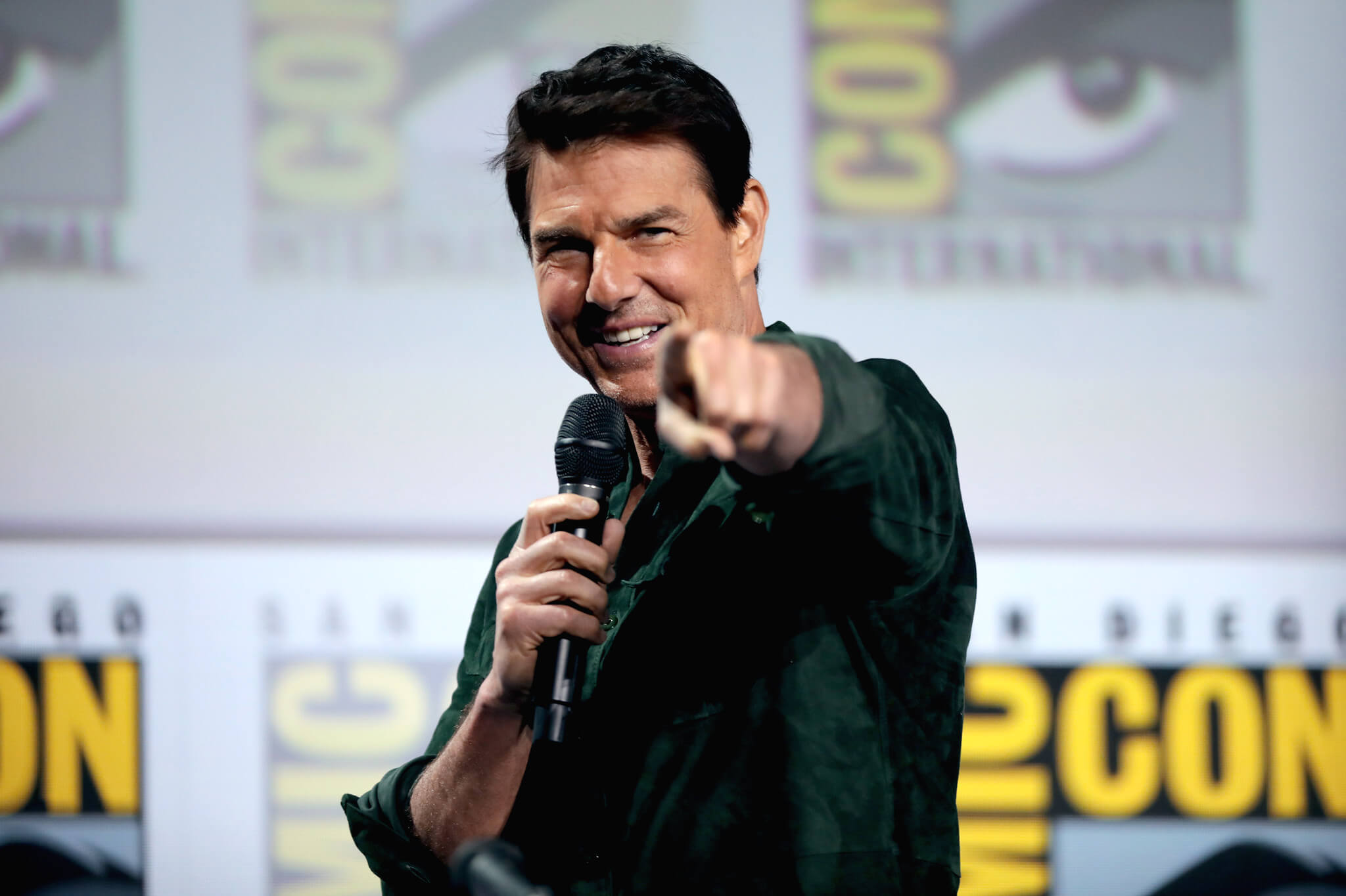
Tom Cruise has been everywhere to advertise his new blockbuster; he even arrived in a helicopter at the Cannes Film Festival8 and attended the Platinum Jubilee of the Queen of England for promotion.9 Finding the plot of Top Gun: Maverick incoherent is like noticing the sound of explosion of space ships in Star Wars. It is irrelevant, as what matters is the mythology created and the inspiration millions of spectators will find.
As such, Top Gun: Maverick will work as more than a mere tool of public relations. It will serve as a weapon of perception management. The film shows that the United States does not have a right to destroy the unsanctioned uranium enrichment plant, it has a duty to do so. There is no time to question this sacred mission as the clock is ticking. Those who question Maverick in the film are all ridiculed, from Ed Harris to Jon Hamm who despite their great looks cannot rival Tom Cruise’s charisma.
The US Navy might see a surge in applications from young men and women who want to defend their country
During the promotion of the film, press junkets went flawless with hardly any mention of scientology, international law, or even the evolution of Top Gun in 2022. Top Gun: Maverick includes a woman in the jet squad, and even pilots from minorities, which pleases progressives. However, the new adventures of Maverick are also not too progressive, so that even far right-wing Americans can rejoice about the “Masculine, Pro-American ‘Top Gun: Maverick’ Blasts to $146M Opening, Towers over Woke Flops”.10
Everyone loves the new Top Gun for its combination of mythology and action scenes. The US Navy might see a surge in applications from young men and women who want to defend their country by bombing other countries. The image of the US army will surely benefit from a perfectly crafted film with its combination of aerial battle at close range scenes and football on the beach. At the same time, Hollywood will be happy to see audiences return to the cinemas when films are too big for Netflix.11 And I left the cinema with all the other middle-aged white men, thinking, damn, Tom Cruise sure is aging well.
- 1Mark Evje, ‘‘Top Gun’ boosting service sign-ups’, Los Angeles Times, 5 July 1986.
- 2‘Top Gun ‘Rehabilitated the Military’s Image’ After Vietnam, According to the Pentagon’, Spy Culture, no date.
- 3Heather Mongilio, ‘Will ‘Top Gun: Maverick’ Boost Navy Recruiting? History Says Probably Not’, USNI News, 27 May 2022.
- 4The complete list of films can be found here: ‘Updated ‘complete’ list of DOD films’, Spy Culture, no date.
- 5Oriana Pawlyk, ‘‘Captain Marvel’ Effect? Air Force Academy Sees Most Female Applicants in 5 Years’, military.com, 5 January 2020.
- 6Katie Lange, ‘How & Why the DOD Works With Hollywood’, U.S. Department of Defense, February 28, 2018.
- 7Clare Fitzgerald, ‘The Wardrobe Department Messed Up the Uniforms in ‘Top Gun: Maverick’’, War History Online, 31 March 2022.
- 8Alex Ritman and Patrick Brzeski, ‘Tom Cruise and ‘Top Gun: Maverick’ Touch Down in Cannes With Fighter Jets, Surprise Palme d’Or’, The Hollywood Reporter, 18 May 2022.
- 9Stuart Heritage, ‘‘More stunts, Maverick!’ Even Tom Cruise couldn’t save the Queen’s hellish jubilee horsefest’, The Guardian, 16 May 2022.
- 10John Nolte, ‘Masculine, Pro-American ‘Top Gun: Maverick’ Blasts to $146M Opening, Towers over Woke Flops’, Breitbart, 28 May 2022.
- 11‘Top Gun: Maverick’, Box Office Mojo, no date.




0 Reacties
Reactie toevoegen